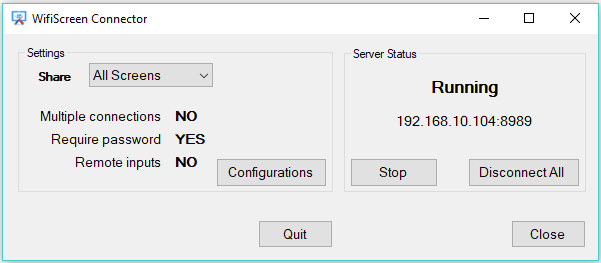10 Free and Open-source Tiling Window Manager for Windows 10 and Windows 11
Table of Content
Understanding Tiling Window Managers
A tiling window manager (WM) is a type of window manager that organizes open windows in a non-overlapping manner on the screen. Instead of traditional overlapping windows, tiling window managers place windows side by side, stacked, or in a grid, automatically adjusting the layout as new windows are opened or closed.
These tools are highly keyboard-focused, allowing users to manage windows efficiently without relying on a mouse, making them ideal for power users and developers who value productivity and workflow efficiency.
History and Importance
Tiling window managers have been around since the early days of graphical user interfaces. They emerged as a response to the need for more efficient window management, particularly for users who work with multiple applications simultaneously.
The emphasis on keyboard shortcuts and automation reduces the time spent resizing and moving windows, allowing users to focus on their tasks.
In modern computing, tiling window managers are especially important for managing multi-monitor setups. As more professionals work with several screens, the ability to quickly and efficiently organize applications across multiple displays becomes crucial.
Tiling window managers streamline this process by automatically arranging windows in a logical manner, reducing clutter and maximizing the use of screen real estate.
Examples of Tiling Window Managers
1- Linux
- i3: A popular and flexible tiling window manager known for its simplicity and extensive configurability.
- Xmonad: A highly customizable tiling window manager written in Haskell, favored by users who prefer to script their configurations.
- Awesome: A dynamic tiling window manager that allows users to define custom layouts and has a strong community of contributors.
2- macOS
- Amethyst: A tiling window manager for macOS that offers automatic window arrangement and easy customization via a simple configuration file.
- Yabai: A powerful tiling window manager for macOS, focusing on providing extensive control over window layout and behavior.
- Phoenix: While not a tiling manager by default, it allows extensive scripting to achieve tiling-like behavior on macOS.

Importance in Managing Multi-Monitor Setups
In the context of Windows, tiling window managers are increasingly important for users who work with multi-monitor setups. Managing multiple screens can quickly become cumbersome with traditional window management, as windows need to be manually moved and resized across different displays.
Tiling window managers address this challenge by allowing users to automatically organize windows across all connected monitors, ensuring that screen space is used efficiently and that workflows remain smooth.
For developers, designers, and professionals who rely on having multiple applications open simultaneously—such as code editors, terminals, and browsers—tiling window managers provide a significant boost in productivity.
They eliminate the need for constant adjustments and help maintain an organized workspace, which is essential for staying focused and efficient in a multi-monitor environment.
Tiling window managers on Windows, though less common than on Linux, are growing in popularity as more users recognize the benefits of a keyboard-focused, automated approach to window management.
Whether it's for coding, design, or general productivity, these tools offer a way to harness the full potential of modern multi-monitor setups.
In the following list, we collected the best active open-source free tools that works as tiling window manager for Windows systems.
1. Komorebi

Komorebi is a tiling window manager for Windows that enhances desktop productivity by providing dynamic tiling, keybindings, and multi-monitor support. It focuses on offering a seamless and efficient window management experience for users who need better control over their workspace.
Features:
- Dynamic Tiling: Automatically arranges windows in a non-overlapping layout.
- Customizable Keybindings: Allows users to define and use keyboard shortcuts for efficient window management.
- Multi-Monitor Support: Manages windows across multiple monitors, ensuring optimal use of screen space.
- Configurable Layouts: Users can customize window layouts to fit their workflow.
- Resource Efficient: Designed to be lightweight, ensuring smooth performance without significant system impact.
2. workspacer
workspacer is a free tiling window manager for Windows 10+, similar in style and function to common unix tiling window managers (dwm, i3, xmonad).
3. GlazeWM

GlazeWM lets you easily organize windows and adjust their layout on the fly by using keyboard-driven commands.
Features
- Simple YAML configuration
- Multi-monitor support
- Customizable rules for specific windows
- Easy one-click installation
- Integration with Zebar as a status bar
4. FancyWM
FancyWM is a tiling window manager for Windows that enhances productivity by automatically organizing windows into a non-overlapping layout. It offers customizable layouts and efficient keyboard controls, making it easier to manage multiple windows and workspaces.
Features:
- Automatic Tiling: Organizes windows without overlap.
- Custom Layouts: Allows users to define their preferred window arrangements.
- Keyboard Control: Enables efficient window management through shortcuts.
- Multi-Monitor Support: Handles windows across multiple screens.
- Lightweight: Minimal resource usage for smooth operation.
5. bug.n

Bug.n is a tiling window manager extension for Windows that brings efficient window management features typically found on Linux to the Windows environment. It integrates seamlessly with Windows, providing users with the ability to tile windows across their desktop, enhancing productivity by organizing open applications more effectively.
Bug.n provides Windows users with a powerful tool to enhance their productivity by bringing the benefits of tiling window management to the Windows desktop, making it easier to manage multiple applications and monitor setups.
bug.n is a tiling window manager add-on for the Explorer shell of Microsoft Windows. It is written in the scripting language AutoHotkey.
Features:
- Tiling Window Management: Automatically arranges open windows in a non-overlapping layout.
- Multi-Monitor Support: Manages windows across multiple monitors for a more efficient workflow.
- Keyboard-Focused Operation: Allows extensive control over window management via keyboard shortcuts.
- Customizable Layouts: Offers various tiling layouts that can be customized to suit different user needs.
- Lightweight: Minimal impact on system resources, ensuring smooth performance.
6. Miguru
Miguru is an automatically tiling window manager for Windows 10, inspired by Amethyst/ xmonad.
7. Nog
Nog is a free and open-source tiling window manager for Windows.
8. grout

group is a free and open-source simple tiling window manager for Windows, written in Rust. Inspired by Budgie's Window Shuffler grid functionality.
9. WinWM
WinWM is a free and open-source tiling window manager inspired by i3wm.
Features
- Multi monitor support
- LuaJit Scripting
- Uses virtual desktops instead of just moving around windows
- Fast seamless performance
10. JigsawWM
JigsawWM is a free and open-source project that aims to increase your productivity by offering a set of automation facilities, including the jmk module as an AHK alternative, a Tiling Window Manager to free you from managing windows manually and the Daemon to support any customization you may have in mind.












